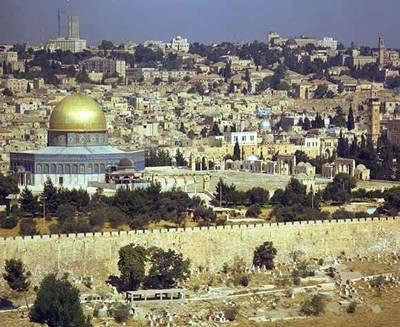Bible Education

Owned and published by Optimi, a division of Optimi Central Services (Pty) Ltd.
7 Impala Avenue, Doringkloof, Centurion, 0157 info@optimi.co.za www.optimi.co.za
© Optimi
Apart from any fair dealing for the purpose of research, criticism or review as permitted in terms of the Copyright Act, no part of this publication may be reproduced, distributed, or transmitted in any form or by any means, electronic or mechanical, including photocopying, recording, or any information storage and retrieval system without prior written permission from the publisher.
The publisher has no responsibility for the persistence or accuracy of URLs for external or third-party internet websites referred to in this publication, and does not guarantee that any content on such websites is, or will remain, accurate or appropriate.
There are instances where we have been unable to trace or contact the copyright holder. If notified, the publisher will be pleased to rectify any errors or omissions at the earliest opportunity.
Reg. No.: 2011/011959/07

Bible Education
Study guide
Grade 8
LESSON ELEMENTS

LEARNING AIMS
What the learner should know at the end of the lesson. Taken from CAPS.
IMPORTANT TERMINOLOGY
New terminology to extend understanding of the subject as part of this lesson.
DEFINE
Definitions of concepts to understand the content.
IMPORTANT
Explain misunderstandings; possible confusion regarding existing knowledge.
TIPS
Any information other than the content, to guide the learner through the learning process.
SAMPLE

FOR THE CURIOUS
Encouragement to do in-depth research about the content. Expand the activity and exercise to such an extent that the learner is encouraged to explore. For the gifted learner: expanded exercises. For Learners with Special Educational Needs (LSEN): explain the need to complete the basic questions to achieve a passing mark.
ACTIVITY
Questions throughout the lesson that must be done in order to test the knowledge of the lesson completed.
EXERCISE

In conclusion of the specific Unit. Formative assessment.
CORE CONTENT
Emphasise the core of content; in-depth explanation of a specific section of the lesson; needs to be understood.
STUDY / REVISION
Time spent to study the content in conclusion of the Unit and in preparation for the test or examination.
These icons facilitate your mastering of the knowledge in each unit in preparation for the examination.
SAMPLE
FOREWORD
RECOMMENDED BOOK
The Bible Handboek by die Bybel. Pat en David Alexander. Vierde Uitgawe. Lux Verbi.2009. Reis deur die Bybel . V. Gilbert Beers
INTRODUCTION
This manual has been written with the aim of giving you a broader knowledge of your faith It is also aimed at deepening your faith. The Bible can only be mastered through intense study and you will still discover new facts every day. In Grade 8 we will look briefly at the geography of the Bible countries. We will also discuss the history of the Old and New
Testament. In the fourth term we will look at the Parables of Jesus. You may work through each lesson at your own pace. However, try to spend a minimum of two hours per week on Bible Education. Work out a lesson plan for yourself to ensure that you cover all the lessons in the course of the term.
The lessons have been set out clearly and with every lesson optional additional reading has been indicated. Keep a notebook at hand while doing the reading and make notes of the facts that you come across. You can then discuss this with your facilitator.
You can also use the study material during your normal bible study time. I hope that this year's work will provide you with a deepened experience in the way you study the Bible and how you approach your faith. Enjoy the work!
SAMPLE
1 Geography of the Biblical lands in Palestine
2 The land of Palestine
3 The Coastal Plain and Central Highlands
4 The Jordan Valley
5 The Dead Sea
6 The climate, plant and animal life in Palestine.
7 Geography of the Biblical lands outside Palestine
Creation
Cain and Abel
Noah
Abram and Isaac
Jacob and Esau
15 The birth of Jesus 16 The visit from the East
17 The flight into Egypt and infanticide (murder of infants) 18 John the Baptist 19 The baptism of Jesus
20 The temptation of Jesus 21 Jesus' first sermon and the calling of the disciples
22 The parable of the sower
23 The parable of the weeds among the wheat
24 The parable of the good Samaritan
25 The parables of the mustard seed and the yeast
26 The parable of the barren fig tree
27 The parable of the lost sheep
UNIT 1 Geography of the Biblical lands
Lesson 1: Geography of the Biblical lands in Palestine
Knowledge of the geography of the Biblical lands is essential for a thorough understanding of the Bible. Most places in the Bible are not known to us and we have never seen these places. To us, the Biblical places are merely names of unknown places. As soon as we can visualise ourselves in these places, even only in our imagination, the Bible becomes a reality to us.
There are not many sources available that can provide us with the necessary information regarding the geography of the Biblical lands. The Bible itself is the biggest source from which we can obtain this information.
There are a number of places that existed in Biblical times and still exist today, such as Jerusalem, Damascus, the Dead Sea and the Jordan River.
Jerusalem today

In the Bible a number of places are mentioned in the same context. We can deduce from this that the places were located close to each other. We find an example of this in Joshua 15–19. In this passage, the territories of the various tribes of Israel in Canaan are described.
In a number of instances the Bible also gives very detailed descriptions of the location of places. In Judges 21:19 the location of Shiloh is described in detail.
The old texts from Biblical times can also shed some light on the geography of the Bible countries. Flavius Josephus was a well-known Jewish historian. He lived in the first century after Christ. Josephus wrote two books that provide detailed and interesting information about Palestine
Eusebius was a Jewish scholar who lived in the fourth century after Christ. He was the bishop of Caesarea and, therefore, had an excellent knowledge of Palestine. Eusebius left detailed information in his book, On the Place-Names in the Holy Scripture″ about places in Palestine.
Many excavations have also been done during the ages that shed light on the location of various places in the Bible. Most ancient cities of the Bible lie beneath a hill. This type of hill is called a "tell". In Biblical times most cities were built on a hill to ensure greater safety. When the city was destroyed by war or earthquakes, the ground was simply levelled and the next city built on top of the ruins. This is how a “tell” was formed.
The excavations produced many artefacts that tell us a lot about the people and life in the Biblical cities. With each excavation the archaeologists worked through various layers or "strata". Each layer represents an occupation phase. This means that every city's time of occupation could be studied separately
You can see that studying the Biblical countries is a very interesting and informative field of study. In the following lessons we will look at specific places in more detail.
DEFINE:
A tell: The ruins hills of old cities in Biblical times.

FOR THE CURIOUS:
Go do some research about the archaeological work and excavations that have already been done in Palestine and surrounding areas.
SAMPLE
What do we learn from these types of excavations?
Make notes of your findings in your workbook and discuss it with your facilitator.
